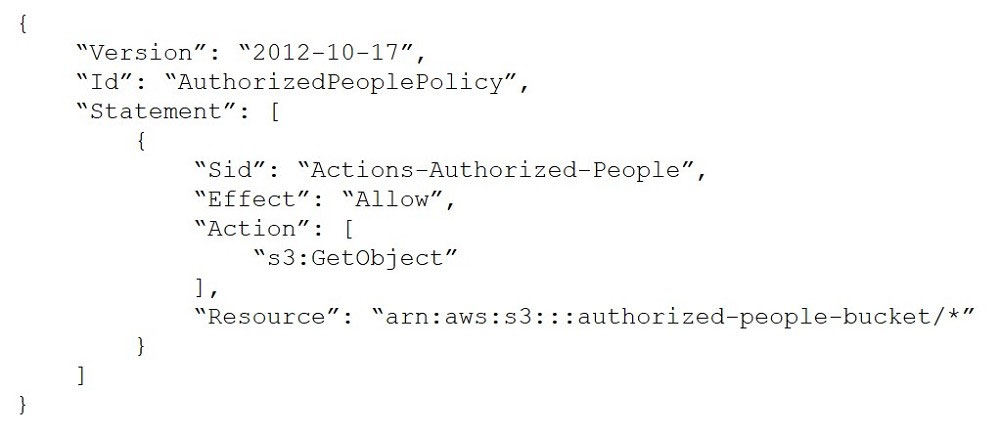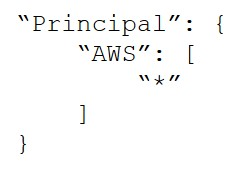

A security engineer needs to create an Amazon S3 bucket policy to grant least privilege read access to IAM user accounts that are named User1, User2 and
User3. These IAM user accounts are members of the AuthorizedPeople IAM group. The security engineer drafts the following S3 bucket policy:
When the security engineer tries to add the policy to the S3 bucket, the following message appears: `Missing required field Principal.`
The security engineer is adding a Principal element to the policy. The addition must provide read access to only User1, User2 and User3.
Which solution meets these requirements?
A.
B.
C.
D.
Igloo
Highly Voted 3 years, 9 months agoRaphaello
Most Recent 1 year, 4 months agoNoexperience
1 year, 10 months agoG4Exams
2 years, 3 months agosakibmas
2 years, 6 months agoD2
2 years, 7 months agoawssazure
2 years, 9 months agosapien45
2 years, 10 months agoPrathamesh2589
2 years, 9 months agoHieuTT
2 years, 8 months agoAtmanvagg
2 years, 8 months agodcasabona
2 years, 11 months agoPratham123
3 years, 4 months agoIMAHM
3 years, 7 months agokiev
3 years, 9 months ago